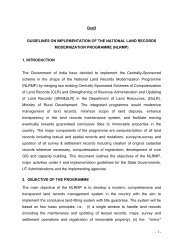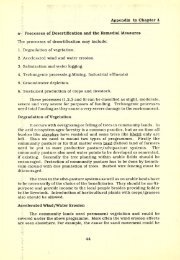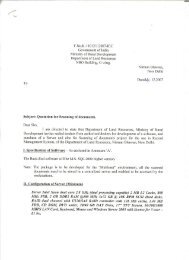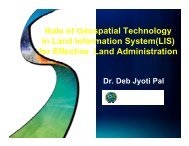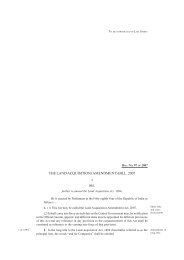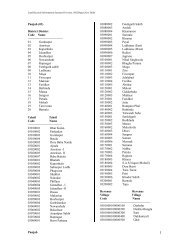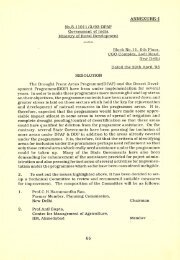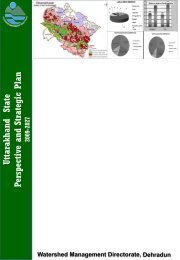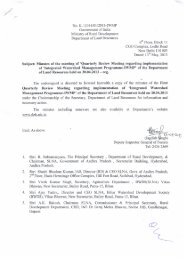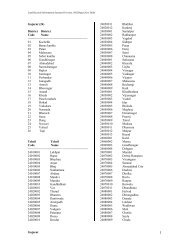Success Stories -NL -Final - Department of Land Resources
Success Stories -NL -Final - Department of Land Resources
Success Stories -NL -Final - Department of Land Resources
You also want an ePaper? Increase the reach of your titles
YUMPU automatically turns print PDFs into web optimized ePapers that Google loves.
H.2. Paving the Way to <strong>Success</strong><br />
A Case Study from Mhainamtsi, Nagaland<br />
Peren district occupies the south western tip <strong>of</strong> Nagaland. The entire population is tribal and<br />
economically very poor. People <strong>of</strong> the district depend for their livelihood on subsistence<br />
jhum/shifting cultivation. Mhainamtsi also called the pineapple village under IWDP Peren-I<br />
was sanctioned during 2005-06. The area earmarked for the watershed development was<br />
500 hectares. It is located at a distance <strong>of</strong> 30 km from the district headquarter, Peren. It is<br />
predominantly inhabited by Zeliang and Rongmei tribes. The village has a total <strong>of</strong> 236<br />
households. The literacy rate is relatively very low (33%). The main occupation <strong>of</strong> the<br />
inhabitants is agriculture.<br />
Problem statement:<br />
The major constraint facing the village is the landuse pattern. Shifting cultivation being a part<br />
and parcel <strong>of</strong> the socio-economic life <strong>of</strong> the villagers, inspite <strong>of</strong> its adverse effects on the<br />
ecosystem and productivity, is still practiced. “Community <strong>Land</strong>s” which is <strong>of</strong>ten considered<br />
as free resources by the population, leads to overexploitation and degradation. The area<br />
receives high rainfall but erratic in distribution and high intensity <strong>of</strong> rainfall which compacts<br />
and reduces the chances <strong>of</strong> infiltration. Due to continuous shifting cultivation and premature<br />
cycle, the NPK ratio has declined which has ultimately resulted in alteration <strong>of</strong> soil microorganism.<br />
The system <strong>of</strong> “free grazing” during the winter months was the principal factor for<br />
the failure <strong>of</strong> any plantation in the past. Further the traditional practice <strong>of</strong> burning jungles in<br />
the dry seasons which is predominantly practiced within the district was one <strong>of</strong> the limiting<br />
factors.<br />
Objectives and Methodology<br />
Considering the above situation the programme was implemented with the objective to<br />
increase productivity <strong>of</strong> the land, to increase the water table in the area, to utilize the jhum<br />
lands on a sustainable manner through better agro-forestry practices and there-by promote<br />
overall economic development, reduce migration and restore the ecological balance and<br />
overall environmental improvement.<br />
Within the project area, several activities were undertaken as per the land capability,<br />
suitability and the actual needs <strong>of</strong> the project area. These activities are afforestation,<br />
plantation <strong>of</strong> horticultural crops and cash crops, drainage line treatment by vegetative and<br />
engineering structures, development <strong>of</strong> small water harvesting structures, land development,<br />
in-situ soil and moisture conservation measures-bunding and vegetative barriers.<br />
Photo 1. A view <strong>of</strong> the contour bund made under the<br />
project<br />
Photo 2. A view <strong>of</strong> the water harvesting<br />
structure developed in the project area<br />
110





